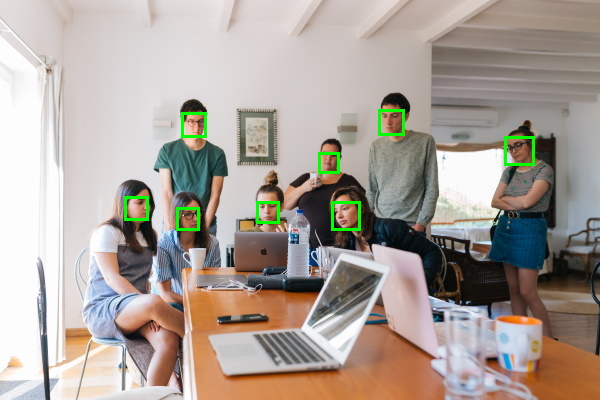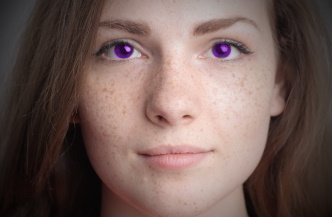This package implements parts of Google®'s MediaPipe models in pure Python (with a little help from Numpy and PIL) without Protobuf graphs and with minimal dependencies (just TF Lite and Pillow).
The package provides the following models:
- Face Detection
- Face Landmark Detection
- Iris Landmark Detection
- Iris recoloring example
The package doesn't use the graph approach implemented by MediaPipe and is therefore not as flexible. It is, however, somewhat easier to use and understand and more accessible to recreational programming and experimenting with the pretrained ML models than the rather complex MediaPipe framework.
Here's how face detection works and an image like shown above can be produced:
from fdlite import FaceDetection, FaceDetectionModel
from fdlite.render import Colors, detections_to_render_data, render_to_image
from PIL import Image
image = Image.open('group.jpg')
detect_faces = FaceDetection(model_type=FaceDetectionModel.BACK_CAMERA)
faces = detect_faces(image)
if len(faces) == 0:
print('no faces detected :(')
else:
render_data = detections_to_render_data(faces, bounds_color=Colors.GREEN)
render_to_image(render_data, image).show()While this example isn't that much simpler than the MediaPipe equivalent, some models (e.g. iris detection) aren't available in the Python API.
Note that the package ships with two models:
FaceDetectionModel.FRONT_CAMERA- a smaller model optimised for selfies and close-up portraits; this is the default model usedFaceDetectionModel.BACK_CAMERA- a larger model suitable for group images and wider shots with smaller faces
If you don't know whether the image is a close-up portrait or you get no
detections with the default model, try using the BACK_CAMERA-model instead.
The latest release version is available in PyPI and can be installed via:
pip install -U face-detection-tfliteThe package can be also installed from source by navigating to the folder
containing setup.py and running
pip install .from a shell or command prompt.



